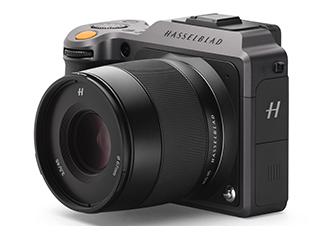Three years after launching the world’s first medium-format mirrorless camera, the X1D 50C, Hasselblad announced its replacement on June 19. Called the X1D II 50C, this second-generation model seeks to smooth out the X1D’s various rough edges with a refined user experience, improved speed, and upgraded screen and viewfinder. The 50-megapixel, 43.8 x 32.9mm sensor returns, offering 1.7 times more surface area than a full frame. Also returning is the minimalist, all-metal body and ergonomics that photographers loved about the first X1D, albeit in a new “graphite gray” color that, we have to admit, looks really good.
Hasselblad says that improving operational speed was one of the primary goals of the X1D II. To that end, the camera uses a new processor and boasts a claimed 46% improvement in startup speed. Shutter lag and viewfinder blackout time have also been reduced. Image playback and menu responsiveness should all be snappier, with speed improvements of 30 to 40% across the board.
The LCD screen is entirely new, now measuring an expansive 3.6 inches with a resolution of 2.36 million pixels. It is still touch-sensitive, and the user interface has been redesigned to make it even easier to navigate. The menu system is now also available in the electronic viewfinder (EVF), making it easier to change settings on bright days where the screen might be washed out.
That’s not the only new thing about the EVF. It’s now an OLED panel with a resolution of 3.69 million dots and has even greater magnification than before, at 0.87x. Both the EVF and the LCD monitor now refresh at a rate of 60 frames per second, a significant improvement from the 37 frame-per-second refresh rate of the original X1D.
While the X1D II still relies on contrast-detection autofocus, Hasselblad said that it is faster than before thanks to that higher refresh rate. Continuous shooting speed has also been bumped up to 2.7 frames per second. That’s not fast in absolute terms, but for a camera that’s all about slower, more methodical types of photography, it’s enough to let photographers shoot short sequences when they need them.
Hasselblad also rolled out a key workflow improvement in a new version of Phocus Mobile. With it, photographers can shoot tethered straight to an iPad Pro over USB-C or wirelessly through Wi-Fi. Both JPEGs and full-resolution RAW images can be culled and edited right on the iPad. The camera can also be remotely controlled from the iPad.
But perhaps most important of all, the X1D II will launch in July at a price significantly lower than the launch price of the original X1D. That’s still a big chunk of change, but it puts the X1D II below the MSRP of flagship full-frame DSLRs like the Nikon D5 and Canon 1D X Mark II.

